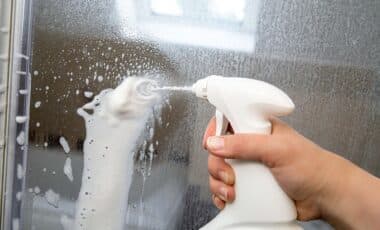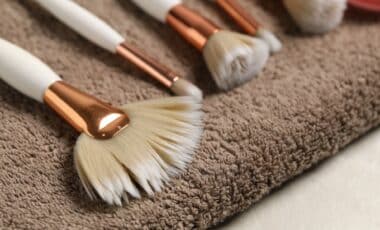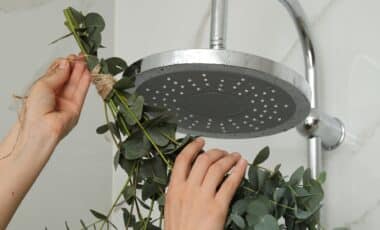 By Keith Mundy July 29, 2020
By Keith Mundy July 29, 2020
As the world slowly emerges from quarantine, international travel for leisure remains largely curtailed, so what better way to shake off your lockdown lethargy and find your voyager’s feet once again than with some home-grown exploration. The country’s battered tourism industry will need all the help it can get as it looks to re-bound and that help surely begins at home—an apposite phrase in the case of pastoral Phrae. Pretty sleepy these days, particularly in its historic old town, it is hard to imagine as you stroll down its leafy lanes that it was once a dynamic hub of Thailand’s teak industry—and a scene of mayhem during a murderous rebellion at the start of the 20th century.
Today what marks out the town of Phrae from other provincial capitals in Thailand is its heritage of stunning mansions and villas built of teak, the brown gold of the province. The precious wood grew abundantly in the forests of this northern Thai fiefdom and made its fortune in the late 19th and early 20th centuries. At various times dependent on the more powerful northern kingdoms of Phayao, Nan and Lanna (Chiang Mai), it maintained its own royal family and a semblance of independence into the early 20th century, when the last Chao Luang Muang Phrae (Lord of Phrae) fled to Laos. He had supported an uprising against the looming power of Bangkok… and lost. The drama of that event, in which scores of central government officials were slaughtered, is certainly at odds with the beautiful period buildings and gorgeously renovated temples of the tranquil historical quarter where it happened.
The year of 1902 was crucial in Phrae’s history. That was when the uprising broke out against the rapidly increasing power of the central government, and its failure resulted in the control of the lucrative teak industry passing from the local elites to foreign concessionaires in a kind of quasi-colonial coup. The names ring out from the era of Western imperialism: the Borneo Company, the Bombay Burmah Trading Corporation and the East Asiatic Company. Also working a teak concession was the Louis T Leonowens Company founded by the son of Anna Leonowens, the tutor at the court of King Mongkut whose sojourn in Siam was infamously fictionalised in that Hollywood musical.
But more dynamic management of the teak reserves and greatly expanded access to world markets meant the town boomed on the back of the logging industry and both locals and foreigners began building substantial teak residences, the better off indulging in delightful gingerbread styling, which created a major change in the way the town looked. Today two surviving mansions are especially redolent of the wealth and power of the elite in those days, both superbly restored and preserved as museums. Open to the public—one for free, the other for a minimal fee—they provide visitors with a fascinating glimpse of the lifestyle of Phrae’s most prominent people in the town’s heyday.
 Khum Chao Luang Muang Phrae, the ornate green-accented teak home of Chao Luang Phiriyachai Thepawong, the last Lord of Phrae, who is commemorated with a statue in front of the mansion
Khum Chao Luang Muang Phrae, the ornate green-accented teak home of Chao Luang Phiriyachai Thepawong, the last Lord of Phrae, who is commemorated with a statue in front of the mansion
Pride of place must go to Khum Chao Luang Muang Phrae, the former mansion of the Lord of Phrae. Khum is a northern Thai word for house and Chao Luang can variously mean lord, prince or even king. Muang historically indicated a town with a defensive wall and a noble ruler. The mansion’s original occupant was Chao Luang Phiriyachai Thepawong, the last Lord of Phrae.
Among the town’s fabulous array of late 19th and early 20th century mansions, Khum Chao Luang is the grandest of them all. Built in 1892 and accented in green, it combines Thai and European colonial architecture in the gingerbread style popular in the reign of King Chulalongkorn. Impeccably preserved with delicate carvings on the balconies, verandas and gables, the house boasts 72 windows and doors. Evoking a long-gone lifestyle, its upper floor features a large central living room with antique furniture, a wind-up gramophone and ornamental elephant tusks. There are also numerous turn-of-the-century photographs illustrating the teak industry, former life in Phrae and personages of the ruling family.
It’s a charming encapsulation of an obscure slice of history, with faded images of shy princesses, elephants hauling logs through forests and locals working at long-gone trades. However, on a grim note, the basement was a dungeon for people from the lord’s retinue who had committed great offences. It had no windows and local lore has dark stories about the prison and its ghosts. There is even a superstition that you must enter the gaol backwards, otherwise you might have nasty experiences like those suffered by the prisoners of yore.
The last lord is strikingly commemorated with a full-figure statue in front of the house and a portrait and bust in the upper lounge. He looks serene and assured but at the turn of the 20th century Chao Luang Phiriyachai was confronting a fast-changing world order in his remote forested bailiwick. Western imperialists were taking over everywhere. Siam, having lost its vassal states in what are now Laos, Cambodia, Myanmar and Malaysia to France and Britain, needed to tighten control on the remaining territory. In the north local rulers were forced to pay higher taxes and hand over much of their power to officials from Bangkok. Resentment was rife and a rebellion led by the Ngiao ethnic group from Shan State, which was under British control, took place in July 1902. Seeing his chance to gain real independence, it seems that Chao Luang Phiriyachai backed the revolt. There are many theories about who was actually behind the uprising in which scores of Siamese officials and their families were killed, and what other destiny the region might have had if the revolt had been successful. In fact, Bangkok soon managed to suppress the rebels and Chao Luang Phiriyachai fled to Luang Prabang in Laos.
For a while the house became the command centre for soldiers keeping the peace after the rebellion had been suppressed. Later, for many years, it became the governor of Phrae’s residence and Their Majesties King Bhumibol and Queen Sirikit enjoyed its antique charms when staying there during their visit to the province in March 1958. Finally, the Phrae provincial administration restored the house and turned it into the museum we see today, winning an Eminent Architecture Award in the process.
Khum Chao Luang
Kham Lue Road
Open daily, 8:30am–4:30pm
Admission: Free
0-5452-4158


Also a domain of Phrae’s royal family and located in the same district, Wongburi House is a lovely two-storey teak mansion built in the last years of the 19th century and now open to the public as a museum. Spectacular and beautifully preserved, painted pink and white and set in manicured gardens, this is a classic example of how the most wealthy of Phrae built their homes at the time.
The house was commissioned by Mae Chao Bua Tha, the first wife of the last Lord of Phrae. After separating from the ruler, the childless lady adopted her niece Chao Sunantha Wongburi, the daughter of the provincial governor, and arranged for her to be married to Luang Phongphibun, a local aristocrat in the teak business. The house was her wedding gift to the couple. It took three years to construct, overseen by a builder from Guangdong in China who led a team of local carpenters. Almost entirely made from teak, the mansion has high ceilings and wide verandas but the outstanding feature is the intricate woodcarving on eaves, gables and balustrades. Strongly influenced by both Lanna Thai styles and European colonial architecture of the time, it’s a Thai take on the gingerbread style. The interiors are also a fusion of Thai and European, airy to suit the tropical climate but with plenty of furniture in the European manner, saying a lot about the aspirations and lifestyle of Phrae’s royal family. Today the house is owned by Sahayot Wongburi, a fifth generation member of the family who was born in the house and lived there until 2005.
The main living areas have been kept pretty much as they might have looked several decades ago, with the original household accoutrements: furniture, earthenware, tableware, antiques, utensils, silverware, decorative items such as Buddha images and elephant and horse sculptures and so on. Certain parts of the house—the kitchen and living room for example—show more recent fittings (the residence remains in the family’s hands and was lived in until recently), including an old black-and-white TV set, which adds to the lived-in effect. Smaller rooms have been transformed into display galleries that focus on the former occupants and the local teak trade. Fascinating insights are offered by old photos and documents illustrating slave dealing and teak exploitation, the very things that supported such opulent living in the old times.
Wongburi House
Kham Lue Road
Open daily, 8:30am–5pm
Admission: Adults 30 baht, children 10 baht
This is a renovation that stalled, a teak house that should be splendid, but which stands empty and bare, presenting the colours of raw wood to the passing world, albeit with its gingerbread eaves restored and painted pastel green. A teak mansion that has bravely weathered the storms of time, Khum Vichai Racha unfortunately is but a ruddy shell, despite the millions of baht that its owner has invested in the building in the last two decades trying to bring it back to its former glory.
We can, however, enjoy the house by imagining the times that it figured strongly in local history. Originally the home of the treasurer of Phrae, Chao Nan Khat, during the 1902 rebellion he hid officials of the central government in his attic, thereby saving their lives. For this service to the Crown he was rewarded by King Chulalongkorn with the title Phra Vichai Racha, hence the house’s name.
During World War II and the Japanese occupation, the resistance organisation known as Seri Thai, or the Free Thai Movement, came into being. Its base in northern Thailand was Phrae, specifically the Khum Vichai Racha. Here it kept weapons and ammunition and provided intelligence to the British and American allies.
 The blue-hued Seri Thai Museum pays tribute to the Free Thai Movement whose northern base was in Phrae, with statues of three key members standing guard outside (Photo: Courtesy of Oliver Hargreathe)
The blue-hued Seri Thai Museum pays tribute to the Free Thai Movement whose northern base was in Phrae, with statues of three key members standing guard outside (Photo: Courtesy of Oliver Hargreathe)
Seri Thai was created by Seni Pramoj, the Thai ambassador to Washington during World War II. Seni’s son continued his legacy by creating the Seri Thai Museum in the former house of the Kantatham family, whose three brothers were leading members of the movement. The trio are immortalised in a statue in front of the two-storey wooden building, which is painted in a bold blue colour. One brother holds the Thai flag while another brandishes a rifle.
Located in downtown Phrae, the small museum focuses on Seri Thai’s covert operations. It displays equipment such as the radios and camping gear used in field operations and illustrations of patrols and weapons training in the deep jungle.
Seri Thai Museum
177 Yantrakit Kosol Road (behind the Paradorn Hotel)
Open daily, 8am–5pm
Admission: Free, donations welcome
0-5451-1177, fb.com/pages/seri-thai-museum-phrae
As one of Thailand’s oldest towns, Phrae naturally has several interesting temples, of which Wat Luang is the oldest. Believed to have been created at the time of the town’s founding in the ninth century, it boasts a striking golden Buddha image in the Chiang Saen style in its main prayer hall.
Most redolent of Thailand’s top teak town, however, is Wat Chom Somwan, which is entirely fashioned from the wood in an exquisite mix of Burmese and Lanna architecture. Built in the reign of Rama V, the temple has tiered roofs adorned with fine fretwork, while the main hall features gold-leafed pillars reaching up to a vaulted ceiling lined with intricately carved teak panels. Antiquities found here include Buddha statues of marble and ivory and ivory scripture slabs inscribed with Burmese script.
But the temple that lives longest in the memory is actually less than a century old. If there’s a prize for the most dazzlingly renovated temple in Thailand, Wat Phong Sunan must be in the running. Outside and inside, every single thing shines brilliantly.

 An unusual Buddha image with an alms bowl at Wat Phong Sunan
An unusual Buddha image with an alms bowl at Wat Phong Sunan
Located next to the Wongburi House on the site of a ruined temple of unknown age, Wat Phong Sunan was created as the Wongburi family temple in 1929 and renamed Phong Sunan in honour of Luang Phongphibun and Chao Sunantha. In the last few years, it has been totally restored to scintillating effect.
An impressive reclining golden Buddha image lies next to a square, Mon-influenced chedi with golden spires. From a larger and much more elaborate chedi 108 gleaming white spires point skyward in a spectacular display, each tipped with golden-tiered pinnacles. But most unexpected of all the temple’s features is a golden turtle figure of gigantic size topped by a white standing Buddha.
The main hall, or ubosot, is a riot of colour, every surface including the ceiling painted with patterns and images. The focus is a graceful 500-year-old seated Buddha image in the subduing Mara posture, called Phra Chao Saen Suk, which came from the original temple. It is so brilliantly reclaimed that it looks as if it was made yesterday.
Wat Phong Sunan
Kham Lue Road
Open dawn till dusk, donations welcomed







